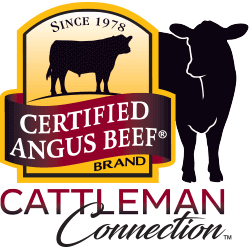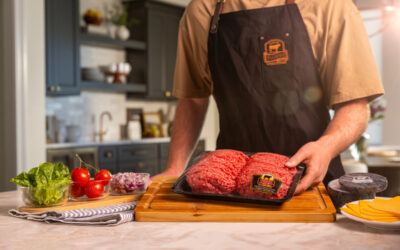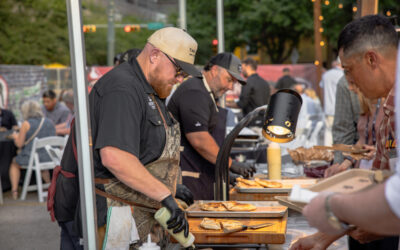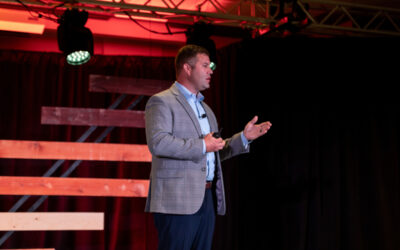
Beef’s a trip day 12: Packers want quality
Now that we’ve got that out of the way, let me talk a little about packers and beef quality.
First off, they want it.

South Dakota rancher Rich Blair told me about the first time he really realized that, based on a conversation with a cattle buyer:
“I told him, ’You know the problem with you guys is that you’ve never told ranchers what kind of cow you wanted. I was thinking Charolais or Herefords or Angus breeds when I asked the question. He goes, ‘Yeah we have. We’ve laid our grids out there. We’ve told you what we wanted.’ And I thought holy smokes he did. He told me he didn’t care if they were blue or green, but he’ll pay me if they grade Choice and he’ll pay me if they’re CABs and Primes.”
Of course they want more high-quality beef. They know it’s worth more to them, so they work on sourcing that. They pay more for the better cattle and less for the, well, lesser cattle.
Some might say that’s all they can do.
But it’s not, and they do more. Animal handling when the cattle arrive—things like letting them rest and not comingling groups so they have to establish new pecking orders—can impact stress level. That ultimately makes a difference in the number of dark cutters and meat tenderness.
As our own meat scientist Phil Bass says, “You only get one chance to handle them right.”
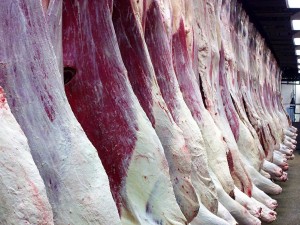
Chilling is important for food safety, so packers have to do it quickly, but not too quickly. If they do, a phenomena known as “cold shortening” can cause the muscle to contract, and that hurts tenderness, too.
Then probably one of the most important steps in our minds is assigning the right grades on the carcasses when they get to the sales cooler. When somebody buys a Choice piece of beef, it better really be a Choice piece of beef, for example.
Several years back, Charlie Mostek, as senior vice president of foodservice sales for Tyson, summed up how packers fit in this beef quality picture. I think it’s pretty darn fitting for this series:
“We can’t focus on the quality and consistency without considering genetics and other attributes, or lack of attributes, of specific breeds. We can’t ignore the impact of feeding practices. We can’t overlook the impacts that chill, aging or postmortem enhancements can have on quality and consistency in our beef. What I’m saying is, you need to look at all the barriers together, instead of one of them at a time. The packer can only do so much to enhance the quality of beef once it arrives at the door, but they can do something. The cattlemen can only do so much to affect the impact that genetics brings into the feedlot, but there are things that they can do to enhance the quality. The cow-calf operator certainly can do things to help enhance the downstream value of the beef.”
May your bottom line be filled with black ink,
Miranda
Beef’s a Trip Archives:
Day 1: Starting at day one
Day 2: Who are these people?
Day 3: Stockholders
Day 4: The cowherd’s purpose
Day 5: Deciding to care
Day 6: Quality focus doesn’t have to skip the middleman
Day 7: Stocking for quality
Day 8: SOLD!
Day 9: What have you done today?
Day 10: Working together to make ‘em better
Day 11: Keep on truckin’
Day 12: Packers want quality
Day 13: The target
Day 14: Packers up close & personal
Day 15: It’s not all about the beef
Day 16: Further processors
Day 17: From here to there–and a lot more
Day 18: He’s on your team
Day 19: Beyond prices, grocery stores uncovered
Day 20: Getting quality in the carts
PS—Have you read “30 days on a Prairie Farm”? If not, you should. Holly got us kicked off on this journey and has a whole list of all the bloggers writing this November.
You may also like
Success, Despite Challenges
Today’s market is complex and competitive. The collective effort of stakeholders across the supply chain positions Certified Angus Beef to meet the record demand for premium beef moving forward. Signals across the beef industry are clear and Angus farmers and ranchers seeking high-quality genetics that deliver premium beef are producing a product in high demand.
Keep the Supply Coming
A record-high 800 registrants from 17 countries gathered in Austin, Texas, to learn more about CAB, become inspired by the culinary work of chefs and pitmasters, and celebrate sales and production success. But at the forefront: supply and demand, a reflection of the chaotic past year, and preparing for what’s ahead.
Consumer Demand, Power of Quality
Demand for high-quality beef persists. But with that demand comes challenges. From tight cattle supplies to higher costs and increasing pressure on retailers to deliver a consistent eating experience, the pressure is on. David O’Diam, CAB VP of retail, addressed the current retail beef environment, highlighting both opportunities and challenges in today’s marketplace.
